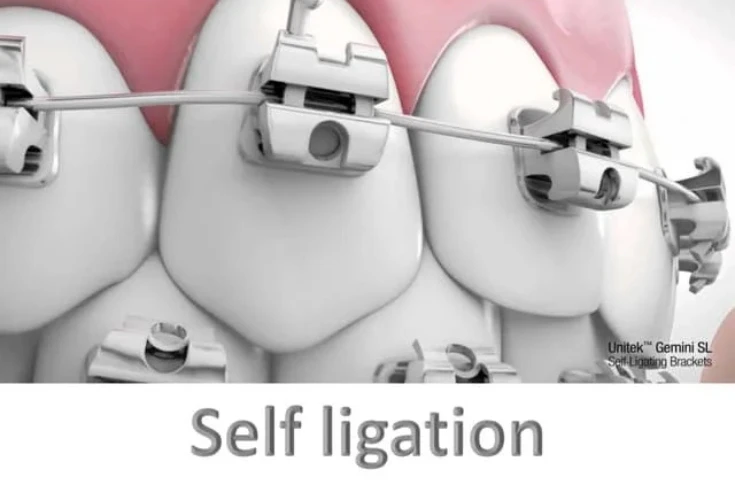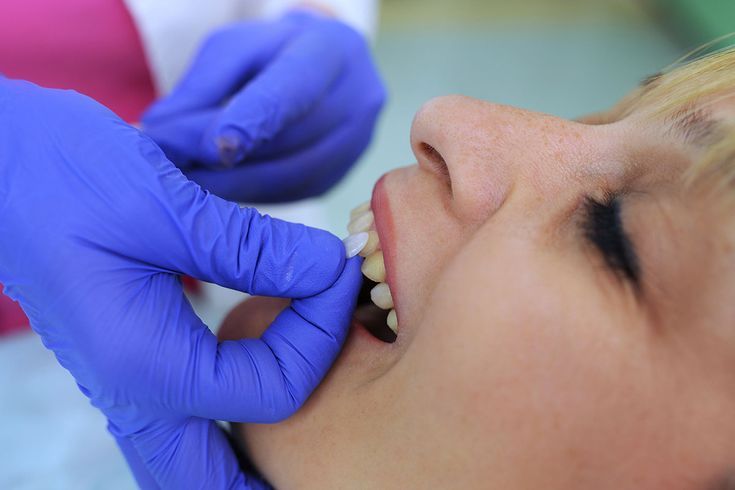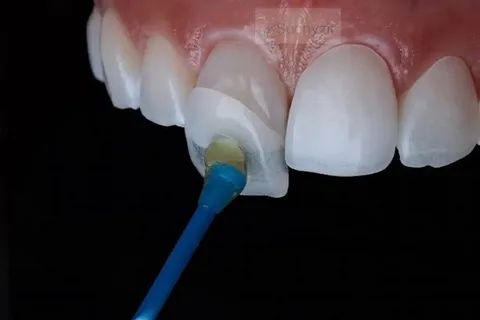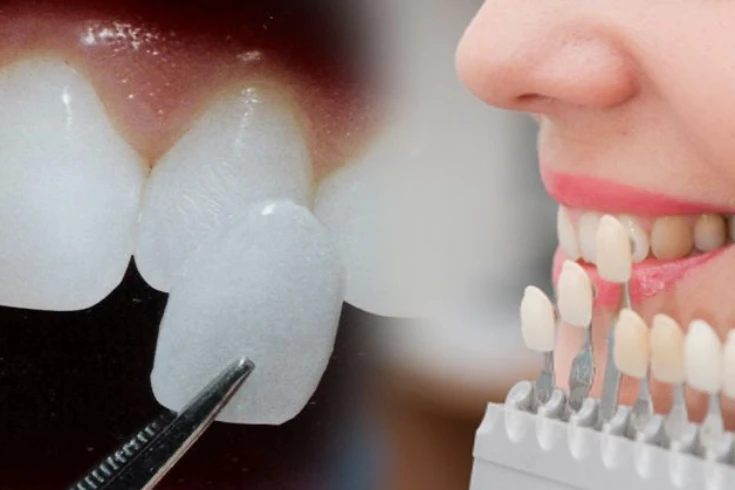What are Self-Ligating Braces
Self-ligating braces are an orthodontic appliance designed to straighten teeth and correct bite issues. Unlike traditional braces, which use elastic or metal ligatures to hold the archwire, self-ligating braces utilize a specialized bracket system that clips the wire.
Orthodontics has evolved significantly over the past few decades, offering patients a range of options for achieving a straighter, healthier smile. Among these innovations are self-ligating braces, which garnered attention for their unique features and benefits. This comprehensive guide will delve into self-ligating braces, how they compare to traditional braces, their comfort levels, benefits, effectiveness, costs, and who might be an ideal candidate for this orthodontic solution.
Self-Ligating Braces vs. Traditional Braces
Traditional Braces
Traditional braces, the most common form of orthodontic treatment, consist of metal brackets attached to the teeth with a bonding agent. An archwire runs through these brackets and is secured with elastic or metal ligatures. These ligatures hold the wire in place and are often replaced or tightened during orthodontic visits.
Self-Ligating Braces
Self-ligating braces differ from traditional ones in that they use a built-in mechanism to secure the archwire. Instead of elastic or metal ligatures, self-ligating braces have brackets with a clip or door that holds the wire. This design reduces the need for additional components and allows the wire to move more freely within the bracket.
Key Differences
- Mechanism: Traditional braces use ligatures (elastic or metal) to hold the wire while self-ligating braces use a built-in clip or door.
- Frictions and Adjustments: The design of self-ligating braces creates less friction, which can lead to more efficient tooth movement.
- Aesthetics: Both traditional and self-ligating braces come in metal and ceramic options, but self-ligating braces are often less bulky.
Are They Comfortable, or Do They Hurt?
Comfort Levels of Self-Ligating Braces
Self-ligating braces are designed to be more comfortable than traditional braces. The reduced friction between the wire and the bracket can lead to less discomfort. The brackets’ smooth, rounded edges are less likely to irritate the inside of your mouth compared to traditional braces.
Pain and Discomfort
While self-ligating braces generally cause less discomfort than traditional braces, it’s important to note that some joint soreness remains. This can occur after initial placement or as your teeth adjust to the new pressures. However, the discomfort is usually less intense and shorter-lived than traditional braces.
Managing Discomfort
Over-the-counter pain relievers can help manage any soreness. Additionally, orthodontic wax can be applied to any areas of the braces that might be irritating. Most patients find discomfort subsides relatively quickly as they get used to the braces.
Benefits of Self-Ligating Braces
Reduced Friction
One of the primary benefits of self-ligating braces is reduced friction. The self-ligating mechanism allows the archwire to slide more freely through the brackets, leading to a more comfortable experience and less pressure on the teeth.
Faster Treatment Times
Many patients experience shorter treatment times with self-ligating braces. The reduced friction and streamlined adjustments can accelerate tooth movement, potentially leading to a quicker overall treatment duration.
Improved Oral Hygiene
Self-ligating braces are easier to clean because they lack the elastic ligatures in traditional braces, which can trap food particles and plaque. This can make it easier to maintain good oral hygiene throughout treatment.
Fewer Adjustments
The design of self-ligating braces often means fewer office visits are required. Since the braces are more accessible to adjust, orthodontists may not need to see you as frequently as traditional braces, which can be convenient for busy individuals.
Aesthetic Options
Self-ligating braces are available in metal and ceramic options. Ceramic self-ligating braces are less noticeable and can be a good choice for patients concerned about their braces’ appearance.
Is Treatment with Self-Ligating Braces Faster or More Effective?
Comparing Treatment Time
Self-ligating braces are often associated with faster treatment times. The reduced friction and efficient wire movement can lead to more effective tooth alignment and potentially shorten the overall duration of treatment.
Effectiveness in Treatment
Self-ligating braces are effective for many orthodontic issues, including crowding, spacing, and bite problems. Their design allows for precise adjustments and controlled tooth movement. However, the effectiveness can depend on individual factors such as the case’s complexity and patient compliance.
Case Studies and Research
Research indicates that self-ligating braces can be as effective as traditional braces, with some studies suggesting that they offer treatment speed and comfort benefits. However, the results can vary based on the specifics of each case and the orthodontist’s expertise.
Risks and Precautions?
Potential Risks
- While self-ligating braces are generally safe and effective, there are some potential risks:
- Discomfort: Some patients may experience initial discomfort or soreness, typically less severe than traditional braces.
- Complications: As with any orthodontic treatment, there is a risk of complications such as wire breakage or bracket detachment, though these issues are relatively rare.
Precautions to Consider
- Oral Hygiene: Maintaining excellent oral hygiene is crucial to prevent plaque buildup and avoid complications. Regular brushing, flossing, and dental check-ups are essential.
- Dietary Restrictions: Avoiding hard, sticky, or chewy foods can help prevent damage to the braces and ensure a smoother treatment process.
- Follow-Up Visits: Even though self-ligating braces may require fewer adjustments, attending all scheduled orthodontic appointments is essential to monitor progress and make necessary adjustments.
Cost of Self-Ligating Braces
Self-ligating braces generally cost between $3500 – $8500. Their design’s advanced technology and materials contribute to the higher cost. However, the investment may be worth it for many patients due to the potential benefits in comfort, treatment time, and oral hygiene.
Insurance and Payment Options
Dental insurance coverage for self-ligating braces varies. Some plans may cover some of the cost, while others may not. It’s a good idea to check with your insurance provider to understand your coverage options.
Many orthodontic practices offer payment plans or financing options to help manage the cost of treatment. Discussing these options with your orthodontist can help make self-ligating braces more affordable.
Who Should Get Self-Ligating Braces?
Ideal Candidates
Self-ligating braces can be an excellent choice for many patients, including those who:
- Seek a More Comfortable Treatment: If comfort is a priority, self-ligating braces may be a better option due to their reduced friction and smoother design.
- Have a Busy Schedule: The reduced need for frequent adjustments makes self-ligating braces a good fit for individuals with demanding schedules.
- Want Faster Results: Self-ligating braces may offer advantages over traditional braces for quicker treatment times.
Not Suitable For Everyone
Self-ligating braces may not be the best choice for every patient. Some complex orthodontic cases may require traditional braces or other orthodontic appliances for optimal results. Not all orthodontists offer self-ligating braces, so finding a provider with experience in this area is essential.
Conclusion
Self-ligating braces represent a significant advancement in orthodontic treatment, offering benefits such as reduced friction, faster treatment times, and improved oral hygiene. While they may come with a higher cost and are unsuitable for every case, they provide many patients with an appealing alternative to traditional braces. By understanding the features, benefits, and potential drawbacks of self-ligating braces, you can decide on the best orthodontic solution for your needs.
If you’re considering self-ligating braces, consult an orthodontist to discuss your options and determine if this innovative approach is right for you. You can achieve a beautiful, healthy smile more comfortably and efficiently with the proper treatment.
FAQs
Will self-ligating braces impact my speech?
Initially, you may experience some difficulty with speech as you adjust to the braces. However, most people adapt quickly and find that their speech returns to normal quickly.
Are self-ligating braces smaller than traditional braces?
Yes, they are smaller. They are not surrounded by a rubber band, making them smaller and more discreet.
Are they as effective as traditional braces?
Yes, they are equally or more efficient than conventional braces. This system allows you to shorten the total duration of treatment by approximately six months.
Are self-ligating braces more comfortable?
Many patients report that self-ligating braces are more comfortable because they reduce friction and pressure on the teeth. This can lead to fewer sore spots and less overall discomfort during treatment.
How do I care for self-ligating braces?
Care for self-ligating braces is similar to that for traditional braces. You should brush and floss regularly, avoid sticky or hard foods, and follow your orthodontist’s recommendations for oral hygiene.
Will self-ligating braces impact my speech?
Initially, you may experience some difficulty with speech as you adjust to the braces. However, most people adapt quickly and find that their speech returns to normal quickly.







